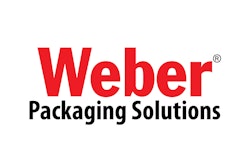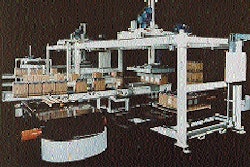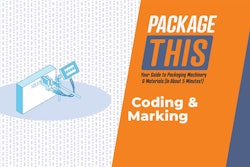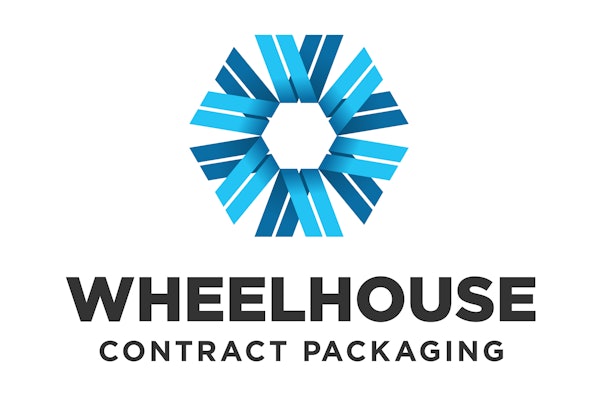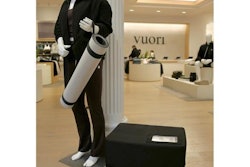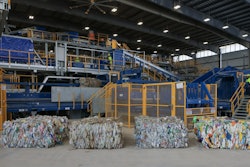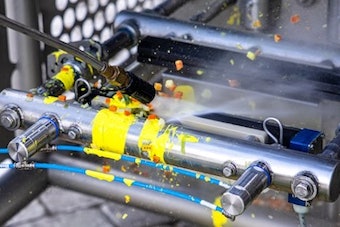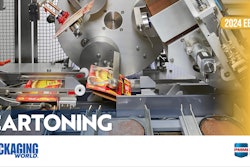
The Specialty Division of the Sherwin-Williams Co. manufactures and packages several varieties of aerosol products, including brand name and private label paints, cleaners, adhesives and disinfectants. The company's Bedford Heights, OH, operation counts among its customers retailers like Kmart, Wal-Mart and Target stores; large distributors such as Grainger; and manufacturers that include PPG Industries and CRC Industries.
Many of these companies now require bar-coded labels on the boxes of product they receive. After all, a stocking system built around bar codes and scanners can greatly enhance a distribution center's ability to manage inventory by speeding up each of the steps involved: reading labels, recording numbers, counting boxes and so on. Bar coding often allows a distributor or retailer to reduce its inventory by knowing precisely what's in stock at a given moment-in short, real-time inventory.
About a year ago, the Specialty Division saw a need to upgrade its on-line labeling system to add flexibility and cost-effectiveness. Faced with customer requests for bar-coded cases and an already overburdened labeling system, the company turned to Weber Marking Systems (Arlington Heights, IL), to provide a custom print/apply bar code labeling system.
"This field had become too diversified for our old system of pre-printed labels," explains Scott Priver, senior systems analyst at the Specialty Division. "There are too many different types of labels to have printed and then carry in inventory. We needed a print/apply system so we could create our own formats and apply special formats to certain customers' cartons.
"For example, we have to provide cartons with Interleaved 2 of 5 or Code 39 bar codes that are order-specific to include product information, description codes, part numbers and more for dozens of customers, many of whom have different label information requirements."
Priver also notes that many retailers today demand bar code labels on product cartons as a condition for carrying that product.
"Bar codes have become part of the technology revolution," says Priver. "They make it possible for retailers to electronically identify and move products through their distribution and warehousing systems quickly and easily."
Aerosols of all kinds
The 250ꯠ-sq.-ft. Bedford Heights plant manufactures a variety of aerosol products each day. Included in its five-line, three-shift operation are several Sherwin-Williams branded products, as well as private label paints filled for other suppliers.
The facility also produces aerosol disinfectants, automotive products, polishes, solvent cleaners and, says Priver, "anything that's available in aerosol" other than pharmaceutical, food and personal care products.
These factors, along with customer requests for bar code compliance labeling, made the facility's labeling requirements all the more challenging.
Adding to the challenge was the diversity of orders the Specialty Division is called upon to fill. Orders can range from as few as 2ꯠ cans of a particular product up to 300ꯠ cans or more, with production lines running at high rates of speed. A labeling system that could accommodate this kind of variety and volume-while maintaining bar code print quality on labels-became vital.
"We interviewed several labeling system suppliers," says Priver. "But Weber Marking Systems was best able to customize labeling software and label application equipment specific to our bar code compliance needs."
Weber designed a special system that uses the Label-Aire Model 2138 print/apply systems and the company's exclusive labeling software, all customized to fit the Bedford Heights operation.
The plan called for installation of the new system on all five manufacturing lines at the facility. That required a personal computer network that could access all the print/apply systems simultaneously.
Custom fit
Manufacturing at the Sherwin-Williams' facility starts in the fill room, where cans are filled with product and agitator balls are dropped in each container. From there, cans move via conveyor to an area where stems are inserted and aerosol propellant is injected into the cans. Actuators are then applied and cans are run through a hot water bath.
Next, the cans are labeled, then moved through a capper station. They are then placed into shipping cases that are sealed with hot melt adhesive.
Boxes of product are conveyed to the print/apply labeling station. The proper bar-coded label is automatically printed then applied by means of an unusual non-contact process. With the patented "tamp-blow" method, the pressure-sensitive label is peeled from its liner and retained by vacuum pressure on an applicator pad. The pad is extended and the label is literally blown onto the carton from approximately .025".
Immediately after they are labeled, the cases pass by another custom feature of the system, an Allen-Bradley fixed station bar-code scanner and decoder. This instrument verifies that a label with the correct information for that order has been applied. If the decoder detects a problem, such as a label with incorrect information or a missing label, a red warning light flashes, alerting an inspector.
In addition, says Priver, some inspectors also carry portable scanners used to scan random boxes on each line to verify that the bar code is correct for a particular product.
It's in the software
Weber was faced with several challenges when its application engineers designed the software to run the labeling system. The aerosol plant downloads a file three times a week from a host mainframe computer located offsite. Those files include the appropriate information for orders, including bar code information.
"The operator on the line enters the order number, which tells our main PC [located in a control room at the Bedford Heights facility] what information goes in which manufacturing line," explains Priver.
The main PC contains Weber's labeling software and the product label formats. The PC also includes a custom Weber program that converts Specialty Division order information files from the mainframe into an ASCII file.
This file is then placed into a labeling software information format using a batch data transfer. A network controller is used to coordinate the communications between the labeling PC and the individual terminals.
Because the production room PC and the print/apply systems were a troublesome 700 feet apart, Weber needed to modify the communications protocol as well.
Priver notes that the labeling function is monitored by an operator at each manufacturing line. Using a code on the order sheet, the operator determines that the particular order is on file in the PC, and that the order requires a bar code label.
The operator first enters a product identification code, either manually using an alphanumeric keyboard or automatically via a newly installed Allen-Bradley scanner and bar-coded work orders. Either way, the information is double checked to verify that the code number is correct.
Once the PC in the production office receives the input, it sends bar code label format and information instructions to that line's print/apply labeling system.
Priver says bar-coded work orders are helpful. "The operator can use a wedge reader [wand] to scan the bar code on each order schedule rather than keystroking the product ID number," says Priver. "The operators prefer the wand because it's much faster. It's an instantaneous response. They still have to input it twice to check that the number is correct, but they just use the wand twice. The turnaround [until the labels start printing] is just seconds."
Priver points out that another custom element that Weber designed into the system is a stop feature. "This allows the operator to stop the system at any time and clear the buffer on the label printer," he says. "This is much more productive than turning the system off and on, which wastes time and labels."
More systems on line
The print/apply labeling system used at the Bedford Heights facility has actually served as a prototype for similar installations at other Specialty Division operations, including plants in Michigan, California, Maryland and Illinois.
"These sites also require the ability to accept downloads from our offsite mainframe," says Priver. "Like the original plant, this requires taking the download, converting it, and putting it into the custom software for print/apply operation with a single keystroke at any of our facilities."
Working with Weber on the first system were Bedford Heights' maintenance technicians, who also played a key role in the system's installation. "Maintenance worked closely with the labeling system vendor, taking a highly customized system and adding personal touches, such as the stop feature, to make it even more responsive to our needs," notes Priver. "Weber also provided customized label roll stock with leaders and trailers on each roll so that no labels are wasted during start-up or roll changeover."
Although not part of the integrated print/apply bar code labeling system, stand-alone thermal-transfer printers from Weber produce bar-coded labels that are used to identify and track incoming pallet loads on inventory and supplies.
All in all, Priver and the Specialty Division are pleased with the new labeling system. "We now have an automated way to download order information from a mainframe computer; the ability to create and maintain label formats on a central PC; a way to print and apply bar code labels for specific orders right on line; and a way to verify that the bar codes contain the right information," he says. "By working closely with the vendor to customize a system, we ended up with one that fits like a glove."
Priver adds that the Specialty Division's customers who asked for the bar coded labeling have been pleased with the new service as well. "We set out to simply comply with the customers' needs by installing the system," he says. "But as a result we're not just keeping customers. In some cases, we're gaining more of the customers' product lines because we're able to provide the labeling service."






